113 years ago today, Beatrix de Rijk became the first female licensed Dutch aircraft pilot. This pioneering aviator was born in Surabaya, modern-day Indonesia in the Dutch East Indies, to a Javan mother and a Dutch father. In the Netherlands, she was the first Dutch woman to drive a German automobile, but she found the car was too slow for her, so she bought an NSU motorbike instead, forfeited her inheritance, and left for Paris. READ how she got her wings… (1911)
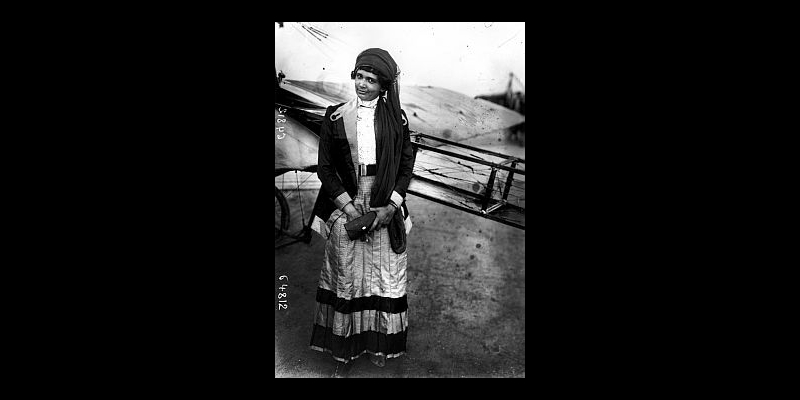
Near Reims, she took flying lessons at the Hanriot school, paying 2,000 francs to the brothers René and Marcel Hanriot who built their own airplanes. She later described the Hanriot machine she flew in as no more than “some slats with a lot of tension wires, some aeroplane dust and a weak little engine,” with a “threatening fuel tank” above her head.
She passed her first 100-meter altitude flying exam on September 8th, and on October 6th she received Pilot Licence No. 652 from the Aero Club de France, becoming the first Dutch woman and the sixth woman in the world to get her pilot’s license. She changed the year of her birth to 1888 on her license as she “had to show it so often.”
In 1948 de Rijk and other aviation pioneers were invited as guests of honour to attend the flying celebration to mark the 40th anniversary of the Royal Dutch Airline Association. On October 6th, 1951, she was honored for earning her pilot’s license 40 years earlier.
MORE Good News on this Day:
- Jacopo Peri’s Euridice, the earliest surviving opera, premiered in Florence (1600)
- Thomas Edison projected his first motion picture (1889)
- The High Court of Australia presided for the first time (1903)
- The Jazz Singer opened in theaters, the first prominent talking movie (1927)
- Pope John Paul II joined Jimmy Carter, becoming the first pontiff to visit the White House (1979)
- Fiji became a republic (1987)
- The US Supreme Court effectively allowed same-sex marriage to proceed in eleven states when it refused to review three federal court rulings that overturned state bans (2014)
68 years ago today, scientist Albert Sabin announced that his oral polio vaccine was ready for testing. With the menace of polio growing, complicated by the fact that there were 3 different strains of the crippling disease, Jonas Salk developed a vaccine given by injection, but it was only effective in preventing complications of polio, and did not prevent the initial infection.
By carrying out autopsies of polio victims, Sabin was able to demonstrate that the poliovirus multiplied and attacked the intestines before it moved to the central nervous system. He developed an oral vaccine, to be put onto sugar cubes that stimulated antibody production. Recipients of his live attenuated oral vaccine included himself, family, and colleagues. The Polish-American medical researcher worked with Russian colleagues to prove its extraordinary effectiveness—and safety—as it worked in the intestines to block the poliovirus from entering the bloodstream.
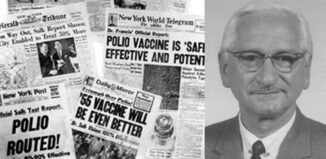
In the next five years, the oral vaccine was tested on at least 100 million people in the USSR, parts of Eastern Europe, Singapore, Mexico, and the Netherlands. In April 1960, the sugar cubes targeting three polio strains were given to 180,000 Cincinnati school children—and the mass immunization effectively eradicated polio in the Ohio city.
The USSR sent millions of doses of the American oral vaccine to places suffering from terrible polio epidemics, such as Japan, where children were becoming paralyzed, and sometimes losing the ability to breathe on their own.
Sabin’s vaccine soon became the predominant method of vaccination in the U.S. over the next three decades, breaking the chain of transmission and allowing for the possibility of eradication. Sabin, who also developed vaccines against encephalitis and dengue, refused to patent his polio vaccine, so its low cost would ensure widespread vaccination—and he never gained a penny. He was awarded the Presidential Medal of Freedom while continuing to live on his salary as a professor. (1956)
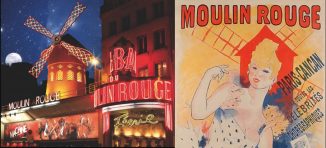
135 years ago today, the Moulin Rouge cabaret opened for the first time in Paris. Birthplace of the high-stepping ‘can-can’ (a scandalous dance for the times), the venue still entertains tourists today. 60 dancers from a dozen different countries perform in two shows every evening on the spot that is still known for its roof with a moulin rouge on top—“red windmill”. The world-renowned Paris cabaret, which was featured in a 2001 Oscar-nominated film with Nicole Kidman and Ewan McGregor, entertains 600,000 audience members each year. (1889)
472 years ago today, Matteo Ricci was born. Leader of the Jesuit Missionaries in China, Ricci’s interfaith dialogue resulted in the first Confucian works to be published in Latin, the first Chinese-Portuguese dictionary, and the first introduction to the Imperial Chinese court of the existence of the New World. Ricci established the Cathedral of the Immaculate Conception in Beijing, the oldest in the city.
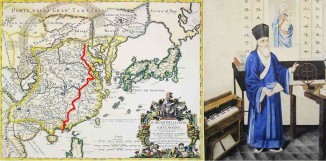
In 1583, Ricci and his colleague Ruggieri settled in Zhaoqing, at the invitation of the governor of Wang Pan, who had heard of Ricci’s skill as a mathematician and cartographer. In 1584, Ricci composed the first European-style world map in Chinese, called “Da Ying Quan Tu” (Chinese: 大瀛全圖 ‘Complete Map of the Great World’). No prints of the 1584 map are known to exist.
In 1602 however, he expanded his work greatly into the Kunyu Wanguo Quantu. The map includes images and annotations describing different regions of the world. Africa is noted to have the world’s highest mountain and longest river. The brief description of North America mentions “humped oxen” or bison (駝峰牛 tuófēngníu), feral horses (野馬, yěma), and names Canada (加拿大, Jiānádà). The map identifies Florida as Huādì (花地), the “Land of Flowers.” Several Central and South American places are named, including Guatemala (哇的麻剌, Wādemálá), Yucatan (宇革堂, Yugétáng), and Chile (智里, Zhīl).
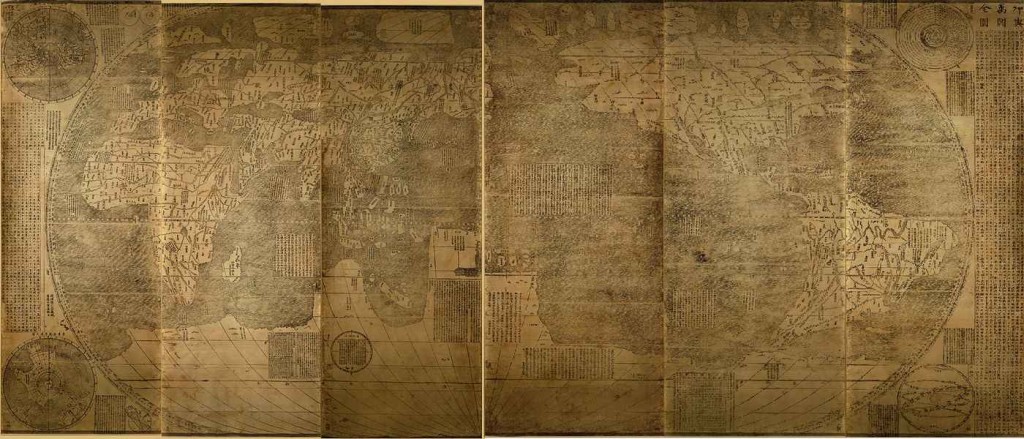
Ti Bin Zhang, first secretary for cultural affairs at the Chinese Embassy in Washington, D.C., said in 2009: “The map represents the momentous first meeting of East and West” and was the “catalyst for commerce.”
24 years ago today, street celebrations erupted in Yugoslavia as the last remaining dictator in Europe, President Slobodan Milosevic, resigned following a public uprising over allegations of vote-rigging during elections.
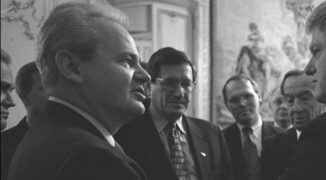
It came to be called the Bulldozer Revolution, after one of the most memorable episodes from the day-long protest in which someone operating a large wheel-loader rammed a government building—the Radio Television of Serbia building, considered to be symbolic of the Milošević regime’s propaganda. (2000)
And, on this day in 2007, Englishman Jason Lewis completed the first human-powered circumnavigation of the globe. Using a pedal boat, roller blades, bicycles, kayak, and his feet, the adventurer and sustainability campaigner finished the harrowing journey in a little over 13 years.
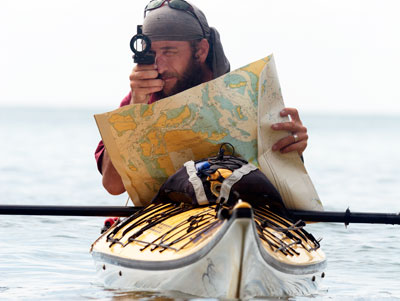
His award-winning books describe how he survived a crocodile attack, blood poisoning, malaria, incarceration for espionage, and was hit by a drunk driver and left with two broken legs in Colorado. Lewis had never crossed an ocean before. Nor had he roller-bladed, kayaked, or rode a bike for more than a few miles.
in the process of completing his ‘Expedition 360’, Lewis also became the first person to cross North America on inline skates, and the first to cross the Pacific Ocean by pedal power. Together with Stevie Smith, Lewis completed the first crossing of the Atlantic Ocean from mainland Europe to North America by human power. He successfully ended his 4,833-day expedition, having traveled 46,505 miles (74,842 km). WATCH his Video…
SHARE the Milestones, Memories, and Music…


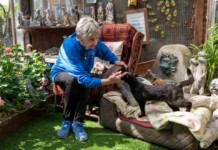

















[…] By Good News Network […]
[…] By Good News Network […]